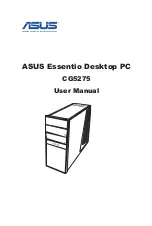
AM-6000 Computer Owner's Manual, Rev. 00
Appendix A - Connector
Configurations
The types and number of connectors found on the rear panel of your AM-6000 will vary, depending on
the hardware configuration you order.
SERIAL I/O CONNECTORS
The AM-6000's I/O interface board, the AM-319-20, includes four on-board RS-232 serial ports. All four
serial ports have standard RJ-45 connectors and use the AM318.IDV interface driver for octal port
numbers 0 through 3.
The AM-6000 system chassis has seven (or more, depending on chassis) rear panel slots designed for
serial I/O expansion. These slots can be used for standard Alpha Micro I/O paddle cards, such as the
AM-359, which connect to the A channel expansion bus on the AM-319-20 board.
For even more flexibility, the first six slots can be used to house I/O paddle cards, and the seventh slot
can be used for connection to an AM-3501 I/O expansion chassis. The expansion chassis can
accommodate an additional seven serial I/O paddle cards which are connected back to the B channel
expansion bus on the main AM-319-20 board.
AM-359 serial I/O expansion paddle cards connected to the A channel bus use the standard AM359.IDV
interface driver. AM-355 serial I/O expansion paddle cards connected to the A channel bus use the new
AM355A.IDV interface driver. Paddle cards connected to the B channel bus use the AM355B.IDV
and/or AM359B.IDV interface drivers.
Although several different types of I/O paddle cards are available, Alpha Micro highly recommends the
use of AM-359 eight-port serial I/O cards for serial I/O expansion. The AM-359 paddle cards use the
same standard RJ-45 connectors and cables as the AM-6000's on-board ports, they can be purchased
with or without optical isolation protection, and they consume less I/O select addressing than any other
I/O expansion card, which allows for more ports per I/O channel!
WHAT IS RS-232?
All AM-6000 serial ports support RS-232. RS-232 is the name of a standard developed by the Electronic
Industry Association (EIA) to encourage standardized interfacing of devices to computer systems. The
letters RS stand for Recommended Standard. The RS-232 interface standard specifies electrical signal
characteristics and names, and defines the functions of the signal and control lines that make up the
interface.
Basically, implementing this standard involves assigning standardized signal definitions for the various
pins of the RS-232 connector at either end of your terminal or printer cables. For example, the wire
attached to Pin #2 carries the signal interpreted on the computer end as "Input Data from Terminal" and
on the terminal end as "Transmit Data To Computer."
















































